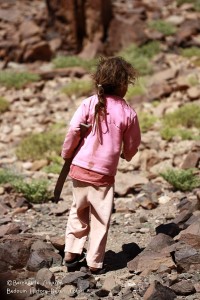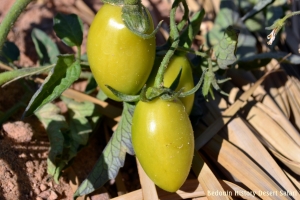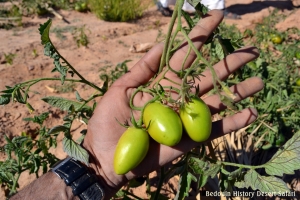
Author: Bernadette Simpson
Winter Showers, May Flowers
Click the link below to read our latest article in Egypt Today:
Winter Showers, May Flowers
“Desert guru Eid al Atrash provides an oral history of the spring pasturing traditions of the Bedouin of Sinai”
By Krista Masonis and Eid al Atrash
Photography by Eid Al Atrash
Heavy rains fell on the parched high mountain plateaus of South Sinai this winter, leaving a bountiful crop in their wake. As small green sprouts push through the cracked earth offering promise of nourishment and health, this spring the Bedouin nomads…”
http://egypttoday.com/blog/2014/05/05/winter-showers-may-flowers/
Foraging with Friends
It’s spring – my favorite time of year in Sinai! Especially after a particularly wet winter since that means our desert plants are thriving and the goats and sheep have plenty to graze. Recently, we met Freyj, one of Bedouin History’s drivers and guides, at his daughter’s springtime camp in the desert. We were welcomed with smiles and a light lunch of fresh bread and goat milk. It didn’t take long for the children to wander over to see their grandfather and his foreign friends. Freyj knows well my passion for plants and photography and knew I would be eager to explore the surrounding desert. Recalling our failed attempts last year to locate one of the edible plants, Zeinab, one of Freyj’s young granddaughters, eagerly offered to get her digging tools and lead our exploration. So we set off with Zeinab, Farah, Mohamed, and Omar to forage for tummayr (تِمِّير), the Bedouin name for Erodium crassifolium.

Known in English as Desert Storks-bill or Hoary-leaved Heron’s-bill, this plant has an edible tuber that grows deep in the ground. But there are eight different Erodium species growing in Sinai so finding the right one involves a knowledge of what tummayr leaves look like and where they grow. All Erodiums have fruit that look like long bird beaks, hence their common English name, but each species has distinct leaves.

Zeinab and the other children are a wealth of information about the local plants, especially the edible ones, as foraging for these are a favorite past time of the Bedouin children who live in the desert for a few months of the year.

I followed Zeinab through the wadi, trying to keep up with her quick steps and even quicker digging abilities. I try to figure out which Storks-bills are the ones we are looking for and was cheered on by Zeinab when I correctly point out a large tummayr plant.

Zeinab dug quickly, scanning the area to check on the progress of the boys, who are leading their own expedition with my husband. It seems that this had turned into a contest to see which “team” can find the most. But we are all successful and end up with handfuls of edible tubers! The children remove the skins with their fingernails and hand them to us to eat. The small potato-like tubers are sweet and crunchy.

Along the way, the children have also spotted sweet desert onions. They are so quick to dig these up that I never see what the plant looks like when it is still rooted in the earth. The onions, possibly an Allium species, are sweeter and juicier than the tummayr. And easier to reach as they are not buried so deep in the rocky ground.

We returned to camp to share our foraged goodies with the other adults at camp, but they showed little interest in eating our treats. It seems foraging with friends is a childhood habit, something to entertain them during the long days in the desert. How lucky I am to have such amazing young friends!

*****
Read more about how the Bedouin live during the spring:
https://bedouinhistorydesertsafari.wordpress.com/2010/05/28/floods-fruit-and-fettah-part-i/
Rabeeya (Springtime) in Ras Sudr
Ras Sudr received rains early in the season so spring has started! Fields of wildflowers are in bloom like never before. 🙂
Arthropods in Sinai
Arthropods make up over 80% of living animal species on Earth and include insects such as butterflies, beetles, bees, ants, and grasshoppers, as well as spiders, scorpions, and more. They are characterized by their exoskeleton, divided body parts, jointed legs, and bilateral symmetry. Here’s a sampling of arthropods found in Sinai. Can you identify them?
Photos by Bernadette Simpson
Sinai Wildflowers
How many of these Sinai wildflowers can you identify? They are all in bloom now in south Sinai!
Check out the Wildlife of the Sinai Peninsula mission on Project Noah for help.
Searching for Sinai Seeds

Three years ago, driven by childhood memories of sweet, juicy tomatoes and a desire for organic vegetables, Eid began a search for seeds. He didn’t want just any seeds and he definitely did not want the seeds available on the market, expensive ones sold by multinational companies. So he started asking around, inquiring with Bedouin in Sinai to see if anyone had seeds saved from their past crops. Eid had no difficulty collecting melon, wheat, and barley seeds that have been growing in Sinai for years, but he could not find anyone who had tomato or cucumber seeds. Determined to find a source of seeds for the plants that once grew in Sinai, Eid set out on a mission. With his knowledge of the geography of Sinai, he began searching for the old campsites, where 40 – 50 years ago, Bedouin would spend the winter months. Eid confirmed that the campsites were old and often-used by looking at the fire pits. By digging beneath the sand, he determined which pits had deep layers of sand melted by the fires. The more layers, the older and more-used the fire was. Eid believed that these traditional campsites would have the seeds he was looking for because families would have left or thrown out seeds as they cooked their daily meals, leaving the area scattered with dried seeds. He decided he would irrigate a few of these places and see what would happen. In one of his chosen areas, Haduda, he regularly watered a patch of earth and waited patiently for something to grow. And something did – a few tomato plants have sprouted, flowered, and even fruited! Eid believes these are not your average tomato plants for the fruits do not look like any of the other tomatoes being grown locally. He believes this is the same variety of tomatoes that may have grown in Sinai years ago. Eid is determined to research this further, wanting to know exactly what type of tomato he is growing. His greatest desire is to have local seeds that have not been tampered with genetically or chemically so that the Bedouin can cultivate local organic vegetables. For now, he awaits the ripening of his tomatoes.
Coastal Clean-Up
Looking for something to do this weekend? Why not join Bedouin History Desert Safaris and Don’t Mess with Dahab on Saturday, January 25, in cleaning up litter along the coast.
Please confirm by Friday if you would like to join us so we can plan transport and tea accordingly. Shokran!
Annual Camel Race Safari 2014
It’s that time of year again! Join us on our Annual Camel Race Safari. The safari will start January 9th, 2014 and we’ll camp overnight in Wadi Zalaga nearby to where the camel race will start early morning on the 10th. After the race, we’ll spend the day and the night in the area, returning to Ras Sudr on January 11th. You can also start and end your safari in Dahab or Nuweiba.
Contact us for details:
eidalatrash [AT] hotmail [DOT] com or +0122 2681 938







